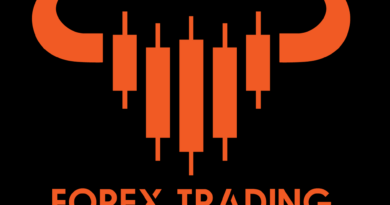A Comprehensive Guide to Forex Trading: Strategies, Tips, and Tools
Introduction to Forex Trading
Forex trading, also known as foreign exchange trading, is the buying and selling of currencies on the foreign exchange market. It is the largest and most liquid financial market in the world, where trillions of dollars are traded daily. As an aspiring forex trader, it is essential to understand the basics of forex trading before diving into the market.
The forex market operates 24 hours a day, five days a week, allowing traders from around the world to participate at any time. The primary objective of forex trading is to make a profit by speculating on the value of one currency against another. For example, if you believe the value of the Euro will rise against the US Dollar, you would buy Euros and sell US Dollars.
To start forex trading, you will need a forex broker who acts as an intermediary between you and the market. It is crucial to choose a reputable broker that offers a user-friendly platform, competitive spreads, and reliable customer support. Once you have set up an account, you can begin trading by analyzing the market and implementing various trading strategies.
Understanding the Forex Market
Before delving into forex trading, it is crucial to understand how the forex market works. The forex market is decentralized, meaning there is no central exchange where all trades take place. Instead, trading is done over-the-counter (OTC) through a global network of banks, financial institutions, and individual traders.
Currencies are traded in pairs, with the most commonly traded pairs known as major currency pairs. These include EUR/USD, GBP/USD, and USD/JPY. Each currency in a pair is represented by a three-letter code, such as EUR for the Euro and USD for the US Dollar.
The forex market is influenced by a variety of factors, including economic indicators, geopolitical events, and market sentiment. Economic indicators, such as GDP growth, inflation rates, and employment data, can have a significant impact on currency values. Geopolitical events, such as elections or trade disputes, can also cause volatility in the forex market.

Basic Forex Trading Strategies
There are several basic forex trading strategies that beginners can utilize to get started. One of the most popular strategies is trend trading, which involves identifying and trading with the prevailing market trend. Traders can use technical indicators, such as moving averages or trend lines, to determine the direction of the trend and enter trades accordingly.
Another strategy is range trading, which involves identifying price ranges in the market and trading within those ranges. Traders can use support and resistance levels to determine the boundaries of the range and enter trades when the price reaches these levels.
Breakout trading is another common strategy, which involves trading when the price breaks above or below a significant level of support or resistance. Traders can use chart patterns, such as triangles or rectangles, to identify potential breakout opportunities.
It is important to note that no trading strategy is foolproof, and losses can occur. Therefore, it is essential to implement proper risk management techniques and set stop-loss orders to limit potential losses.
Advanced Forex Trading Strategies
Once you have mastered the basic forex trading strategies, you can explore more advanced techniques to enhance your trading skills. One advanced strategy is swing trading, which involves holding positions for a few days to a few weeks to take advantage of medium-term price movements. Swing traders typically use technical analysis and chart patterns to identify potential entry and exit points.
Another advanced strategy is scalping, which involves making quick trades to capture small price movements. Scalpers aim to take advantage of short-term fluctuations in the market and often use high leverage to amplify their profits. However, scalping requires excellent timing and discipline, as the market can be highly volatile.
Carry trading is another advanced strategy that involves taking advantage of interest rate differentials between currencies. Traders can earn interest by holding positions in currencies with higher interest rates while simultaneously selling currencies with lower interest rates.
It is important to thoroughly understand and practice these advanced strategies before implementing them in live trading. Additionally, continuous learning and staying updated with market news and developments are crucial for successful forex trading.
Fundamental Analysis in Forex Trading
Fundamental analysis is a method used to evaluate the intrinsic value of a currency based on economic, political, and social factors. It involves analyzing economic indicators, such as GDP growth, inflation rates, and interest rates, to determine the overall health of a country’s economy.
Traders who employ fundamental analysis believe that the value of a currency is determined by the underlying economic factors. For example, if a country’s economy is growing at a healthy rate, its currency is likely to strengthen against other currencies.
Fundamental analysis also involves monitoring geopolitical events, such as elections, policy changes, and trade agreements, as these can significantly impact currency values. For example, a political instability or trade dispute can cause a currency to depreciate.
To perform fundamental analysis, traders need to stay updated with economic news releases, central bank statements, and other relevant information. Economic calendars and financial news websites can be valuable tools for traders to keep track of these events.
Technical Analysis in Forex Trading
Technical analysis is a method used to predict future price movements based on historical price data and statistical indicators. It involves analyzing charts, patterns, and indicators to identify trends and potential trading opportunities.
Traders who employ technical analysis believe that historical price patterns repeat themselves and can provide valuable insights into future price movements. They use various technical indicators, such as moving averages, oscillators, and trend lines, to identify entry and exit points.
Chart patterns, such as head and shoulders, double tops, or triangles, can also provide valuable signals for traders. These patterns indicate potential trend reversals or continuations, allowing traders to make informed trading decisions.
It is important to note that technical analysis is not foolproof and should be used in conjunction with other analysis methods. Traders should also consider risk management techniques and set stop-loss orders to limit potential losses.

Risk Management in Forex Trading
Risk management is a crucial aspect of forex trading that helps traders minimize potential losses and protect their capital. It involves implementing strategies to manage and control risks associated with trading.
One of the key risk management techniques is setting appropriate stop-loss orders. A stop-loss order is an instruction to automatically close a trade when the price reaches a certain level. By setting a stop-loss order, traders can limit potential losses and protect their capital.
Another risk management technique is diversification, which involves spreading investments across different currency pairs or asset classes. By diversifying their portfolio, traders can reduce the impact of any single trade or market event on their overall performance.
Traders should also consider their risk tolerance and set appropriate position sizes. It is generally recommended to risk only a small percentage of the trading capital on each trade to avoid significant losses.
Continuous monitoring and evaluation of trading strategies and performance are also important for effective risk management. Traders should regularly review their trading activities, identify areas for improvement, and make necessary adjustments to their strategies.
Tips for Successful Forex Trading
Successful forex trading requires a combination of knowledge, skills, and discipline. Here are some tips to help you improve your trading performance:
- Educate Yourself: Continuously learn and stay updated with market news, analysis, and trading strategies. Take advantage of educational resources, such as books, online courses, and webinars.
- Develop a Trading Plan: Create a well-defined trading plan that outlines your trading goals, risk tolerance, and strategies. Stick to your plan and avoid impulsive trading decisions.
- Practice on Demo Accounts: Before trading with real money, practice on demo accounts to familiarize yourself with the trading platform and test your strategies. This will help build confidence and improve your trading skills.
- Manage Your Emotions: Emotions can negatively impact trading decisions. Maintain discipline and control your emotions, especially during periods of market volatility.
- Use Proper Risk Management: Implement risk management techniques, such as setting stop-loss orders and diversifying your portfolio, to protect your capital.
- Start with Small Investments: Begin with small investments and gradually increase your position sizes as you gain experience and confidence.
- Keep a Trading Journal: Maintain a trading journal to record your trades, strategies, and emotions. Regularly review your journal to identify patterns and areas for improvement.
- Learn from Your Mistakes: Accept that losses are part of trading and learn from your mistakes. Analyze your losing trades to understand what went wrong and make necessary adjustments to your strategies.
Essential Tools for Forex Trading
To effectively trade forex, you will need certain tools and resources. Here are some essential tools for forex trading:
- Trading Platform: A reliable and user-friendly trading platform is essential for executing trades, analyzing charts, and accessing market data. Popular trading platforms include MetaTrader and cTrader.
- Economic Calendar: An economic calendar provides information on upcoming economic events, news releases, and central bank statements. This helps traders stay informed and plan their trading activities accordingly.
- Charting Software: Charting software allows traders to analyze price movements, apply technical indicators, and identify trading opportunities. Popular charting software includes TradingView and MetaTrader.
- News and Analysis Resources: Access to reliable news and analysis resources is crucial for staying updated with market developments. Financial news websites, research reports, and analysis tools can provide valuable insights for trading decisions.
- Risk Management Tools: Risk management tools, such as position size calculators and risk/reward calculators, help traders manage their risk and determine appropriate position sizes.
- Trading Education Resources: Continuously educating yourself is vital for successful forex trading. Take advantage of educational resources, such as online courses, webinars, and trading books, to enhance your knowledge and skills.
Best Forex Trading Platforms
Choosing the right forex trading platform is essential for a smooth trading experience. Here are some of the best forex trading platforms available:
- MetaTrader 4 (MT4): MetaTrader 4 is a widely-used forex trading platform known for its user-friendly interface, advanced charting capabilities, and automated trading options. It offers a wide range of technical indicators and trading tools, making it suitable for both beginners and experienced traders.
- MetaTrader 5 (MT5): MetaTrader 5 is the successor to MT4 and offers additional features, such as more advanced technical analysis tools and the ability to trade other financial instruments, including stocks and commodities.
- cTrader: cTrader is a popular forex trading platform known for its fast execution speed and advanced charting capabilities. It offers a user-friendly interface and a wide range of order types, making it suitable for both manual and automated trading.
- NinjaTrader: NinjaTrader is a powerful trading platform that provides advanced charting, analysis, and automation features. It is favored by professional traders and offers a wide range of third-party add-ons and indicators.
- TradingView: Although not a dedicated trading platform, TradingView offers powerful charting capabilities and a social trading community. It allows traders to share ideas, analyze charts, and access a wide range of technical indicators.
Forex Trading Courses and Education
Continuing education is crucial for improving your forex trading skills and staying updated with market developments. Here are some recommended forex trading courses and education resources:
- Online Courses: Many reputable forex brokers and educational institutions offer online courses that cover various aspects of forex trading. These courses provide in-depth knowledge and practical skills to enhance your trading performance.
- Webinars: Webinars are live online seminars conducted by experienced traders and industry experts. They cover a wide range of topics, including trading strategies, technical analysis, and risk management.
- Trading Books: There are numerous books available on forex trading that provide valuable insights and strategies. Some popular titles include “Trading in the Zone” by Mark Douglas and “Japanese Candlestick Charting Techniques” by Steve Nison.
- Trading Communities: Joining online trading communities and forums can provide opportunities to interact with fellow traders, share ideas, and learn from experienced professionals.
- Demo Accounts: Practicing on demo accounts offered by forex brokers allows you to test your strategies and gain practical experience without risking real money.




